Peter Fettke
Interpretable and Explainable Machine Learning Methods for Predictive Process Monitoring: A Systematic Literature Review
Dec 29, 2023Abstract:This paper presents a systematic literature review (SLR) on the explainability and interpretability of machine learning (ML) models within the context of predictive process mining, using the PRISMA framework. Given the rapid advancement of artificial intelligence (AI) and ML systems, understanding the "black-box" nature of these technologies has become increasingly critical. Focusing specifically on the domain of process mining, this paper delves into the challenges of interpreting ML models trained with complex business process data. We differentiate between intrinsically interpretable models and those that require post-hoc explanation techniques, providing a comprehensive overview of the current methodologies and their applications across various application domains. Through a rigorous bibliographic analysis, this research offers a detailed synthesis of the state of explainability and interpretability in predictive process mining, identifying key trends, challenges, and future directions. Our findings aim to equip researchers and practitioners with a deeper understanding of how to develop and implement more trustworthy, transparent, and effective intelligent systems for predictive process analytics.
A Discussion on Generalization in Next-Activity Prediction
Sep 18, 2023Abstract:Next activity prediction aims to forecast the future behavior of running process instances. Recent publications in this field predominantly employ deep learning techniques and evaluate their prediction performance using publicly available event logs. This paper presents empirical evidence that calls into question the effectiveness of these current evaluation approaches. We show that there is an enormous amount of example leakage in all of the commonly used event logs, so that rather trivial prediction approaches perform almost as well as ones that leverage deep learning. We further argue that designing robust evaluations requires a more profound conceptual engagement with the topic of next-activity prediction, and specifically with the notion of generalization to new data. To this end, we present various prediction scenarios that necessitate different types of generalization to guide future research.
Quantifying and Explaining Machine Learning Uncertainty in Predictive Process Monitoring: An Operations Research Perspective
Apr 13, 2023



Abstract:This paper introduces a comprehensive, multi-stage machine learning methodology that effectively integrates information systems and artificial intelligence to enhance decision-making processes within the domain of operations research. The proposed framework adeptly addresses common limitations of existing solutions, such as the neglect of data-driven estimation for vital production parameters, exclusive generation of point forecasts without considering model uncertainty, and lacking explanations regarding the sources of such uncertainty. Our approach employs Quantile Regression Forests for generating interval predictions, alongside both local and global variants of SHapley Additive Explanations for the examined predictive process monitoring problem. The practical applicability of the proposed methodology is substantiated through a real-world production planning case study, emphasizing the potential of prescriptive analytics in refining decision-making procedures. This paper accentuates the imperative of addressing these challenges to fully harness the extensive and rich data resources accessible for well-informed decision-making.
Communicating Uncertainty in Machine Learning Explanations: A Visualization Analytics Approach for Predictive Process Monitoring
Apr 12, 2023Abstract:As data-driven intelligent systems advance, the need for reliable and transparent decision-making mechanisms has become increasingly important. Therefore, it is essential to integrate uncertainty quantification and model explainability approaches to foster trustworthy business and operational process analytics. This study explores how model uncertainty can be effectively communicated in global and local post-hoc explanation approaches, such as Partial Dependence Plots (PDP) and Individual Conditional Expectation (ICE) plots. In addition, this study examines appropriate visualization analytics approaches to facilitate such methodological integration. By combining these two research directions, decision-makers can not only justify the plausibility of explanation-driven actionable insights but also validate their reliability. Finally, the study includes expert interviews to assess the suitability of the proposed approach and designed interface for a real-world predictive process monitoring problem in the manufacturing domain.
Towards Automated Process Planning and Mining
Aug 18, 2022Abstract:AI Planning, Machine Learning and Process Mining have so far developed into separate research fields. At the same time, many interesting concepts and insights have been gained at the intersection of these areas in recent years. For example, the behavior of future processes is now comprehensively predicted with the aid of Machine Learning. For the practical application of these findings, however, it is also necessary not only to know the expected course, but also to give recommendations and hints for the achievement of goals, i.e. to carry out comprehensive process planning. At the same time, an adequate integration of the aforementioned research fields is still lacking. In this article, we present a research project in which researchers from the AI and BPM field work jointly together. Therefore, we discuss the overall research problem, the relevant fields of research and our overall research framework to automatically derive process models from executional process data, derive subsequent planning problems and conduct automated planning in order to adaptively plan and execute business processes using real-time forecasts.
Discrete models of continuous behavior of collective adaptive systems
Apr 26, 2022



Abstract:Artificial ants are "small" units, moving autonomously around on a shared, dynamically changing "space", directly or indirectly exchanging some kind of information. Artificial ants are frequently conceived as a paradigm for collective adaptive systems. In this paper, we discuss means to represent continuous moves of "ants" in discrete models. More generally, we challenge the role of the notion of "time" in artificial ant systems and models. We suggest a modeling framework that structures behavior along causal dependencies, and not along temporal relations. We present all arguments by help of a simple example. As a modeling framework we employ Heraklit; an emerging framework that already has proven its worth in many contexts.
Multivariate Business Process Representation Learning utilizing Gramian Angular Fields and Convolutional Neural Networks
Jun 15, 2021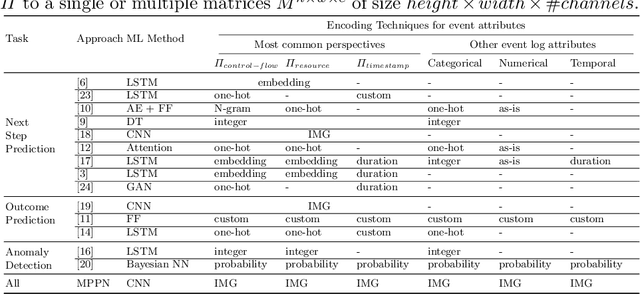
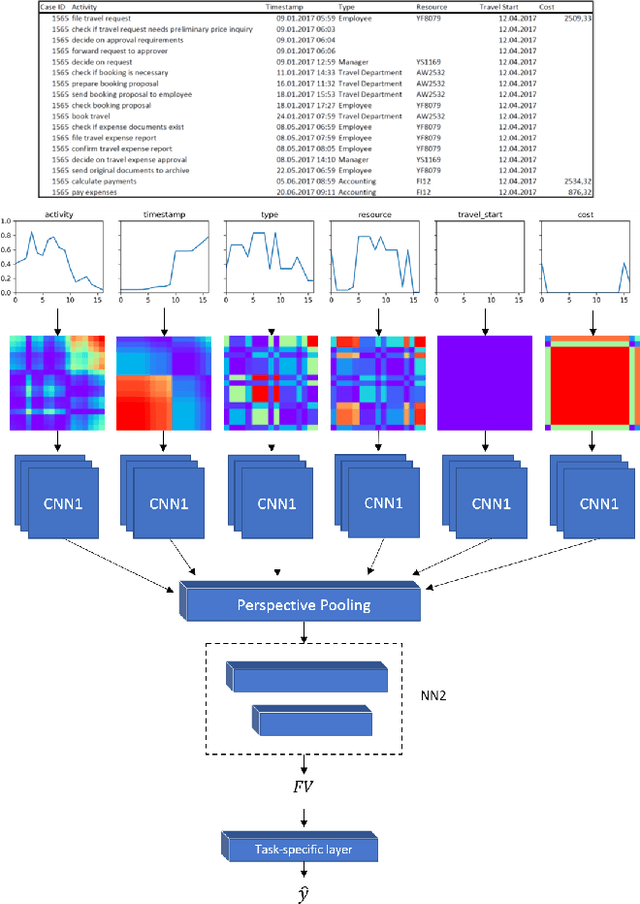
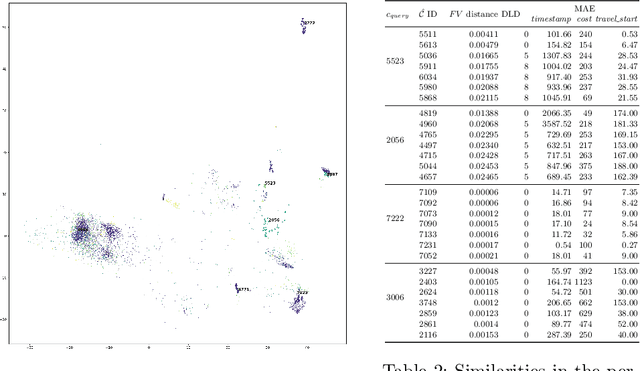
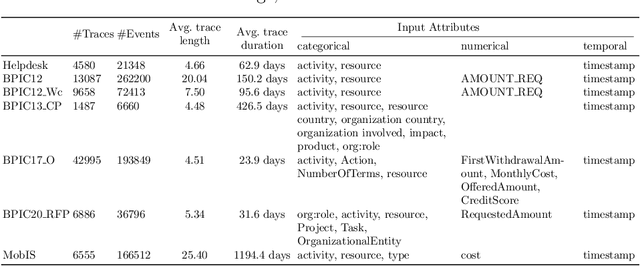
Abstract:Learning meaningful representations of data is an important aspect of machine learning and has recently been successfully applied to many domains like language understanding or computer vision. Instead of training a model for one specific task, representation learning is about training a model to capture all useful information in the underlying data and make it accessible for a predictor. For predictive process analytics, it is essential to have all explanatory characteristics of a process instance available when making predictions about the future, as well as for clustering and anomaly detection. Due to the large variety of perspectives and types within business process data, generating a good representation is a challenging task. In this paper, we propose a novel approach for representation learning of business process instances which can process and combine most perspectives in an event log. In conjunction with a self-supervised pre-training method, we show the capabilities of the approach through a visualization of the representation space and case retrieval. Furthermore, the pre-trained model is fine-tuned to multiple process prediction tasks and demonstrates its effectiveness in comparison with existing approaches.
A systematic literature review on state-of-the-art deep learning methods for process prediction
Jan 26, 2021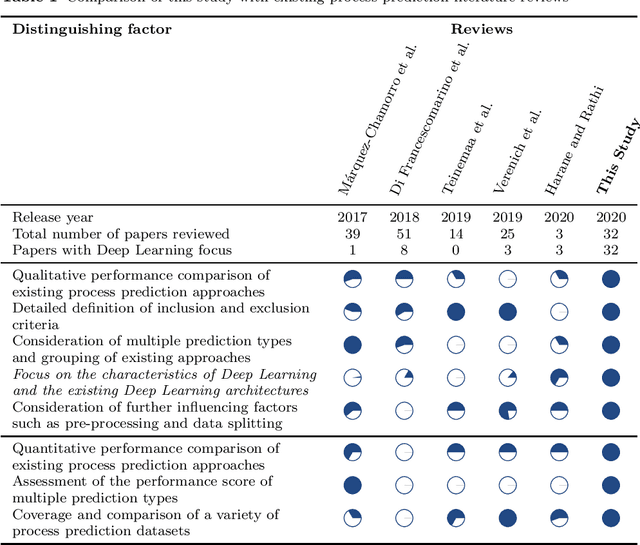
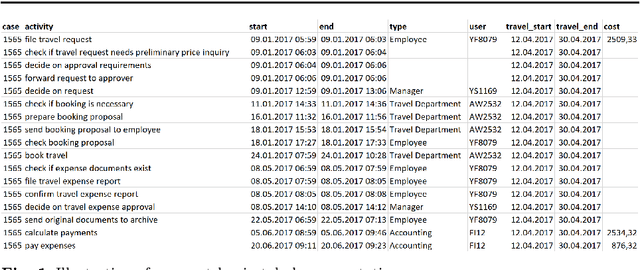


Abstract:Process mining enables the reconstruction and evaluation of business processes based on digital traces in IT systems. An increasingly important technique in this context is process prediction. Given a sequence of events of an ongoing trace, process prediction allows forecasting upcoming events or performance measurements. In recent years, multiple process prediction approaches have been proposed, applying different data processing schemes and prediction algorithms. This study focuses on deep learning algorithms since they seem to outperform their machine learning alternatives consistently. Whilst having a common learning algorithm, they use different data preprocessing techniques, implement a variety of network topologies and focus on various goals such as outcome prediction, time prediction or control-flow prediction. Additionally, the set of log-data, evaluation metrics and baselines used by the authors diverge, making the results hard to compare. This paper attempts to synthesise the advantages and disadvantages of the procedural decisions in these approaches by conducting a systematic literature review.
Local Post-Hoc Explanations for Predictive Process Monitoring in Manufacturing
Sep 22, 2020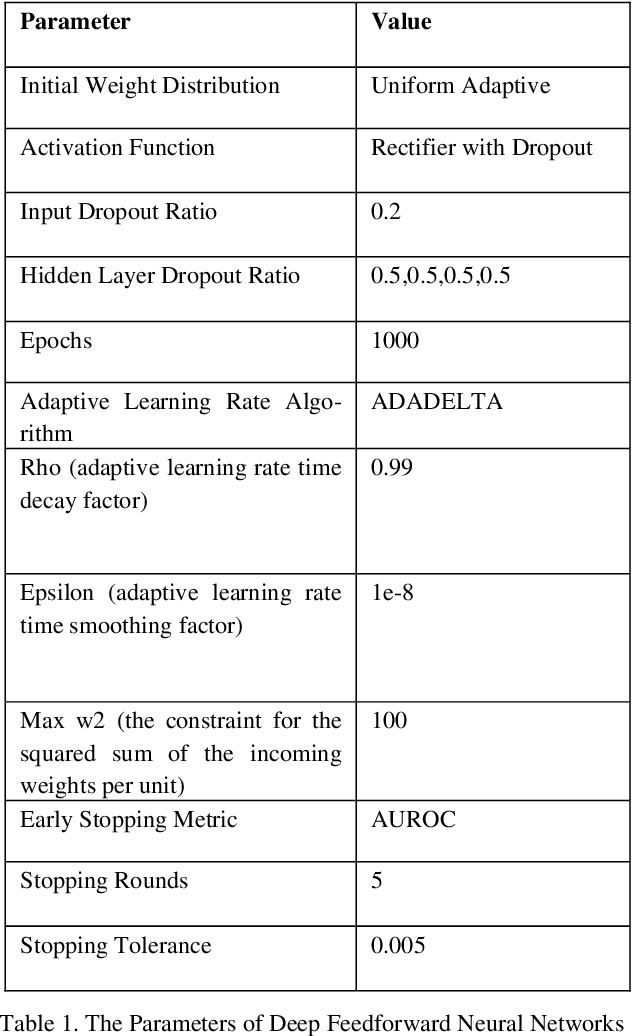
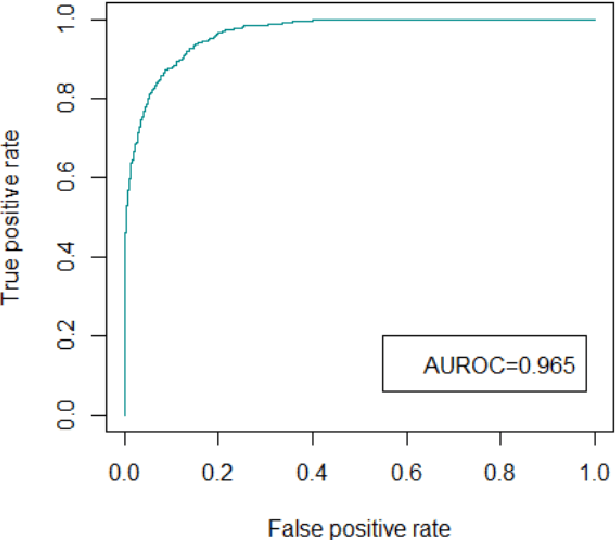
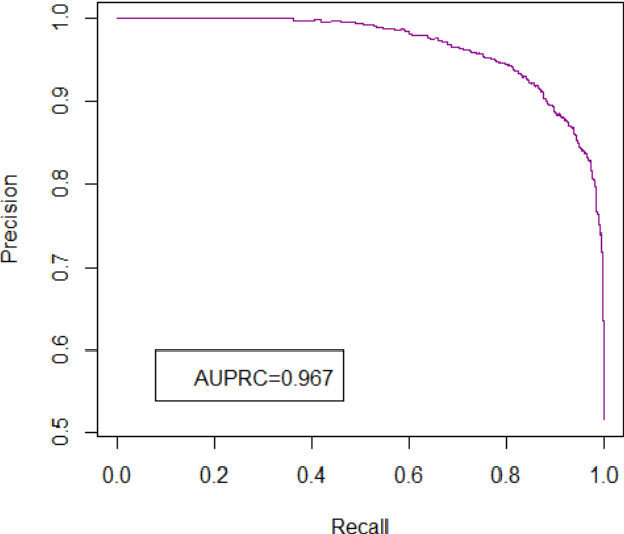
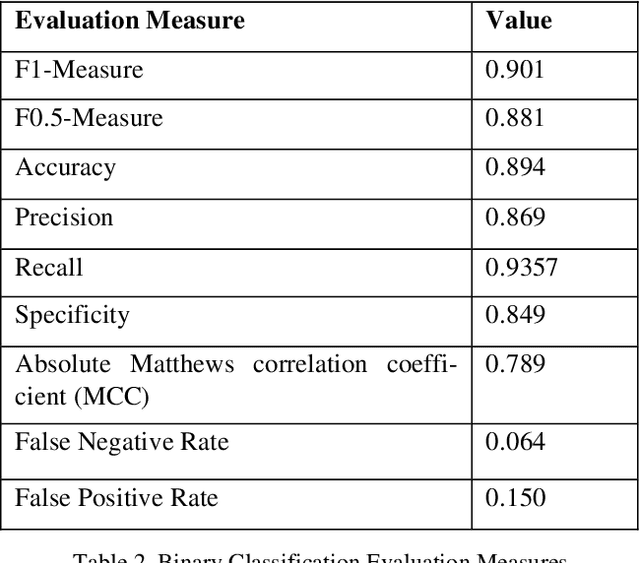
Abstract:This study proposes an innovative explainable process prediction solution to facilitate the data-driven decision making for process planning in manufacturing. After integrating the top-floor and shop-floor data obtained from various enterprise information systems especially from Manufacturing Execution Systems, a deep neural network was applied to predict the process outcomes. Since we aim to operationalize the delivered predictive insights by embedding them into decision making processes, it is essential to generate the relevant explanations for domain experts. To this end, two local post-hoc explanation approaches, Shapley Values and Individual Conditional Expectation (ICE) plots, are applied which are expected to enhance the decision-making capabilities by enabling experts to examine explanations from different perspectives. After assessing the predictive strength of the adopted deep neural networks with relevant binary classification evaluation measures, a discussion of the generated explanations is provided. Lastly, a brief discussion of ongoing activities in the scope of current emerging application and some aspects of future implementation plan concludes the study.
Explainable Artificial Intelligence for Process Mining: A General Overview and Application of a Novel Local Explanation Approach for Predictive Process Monitoring
Sep 12, 2020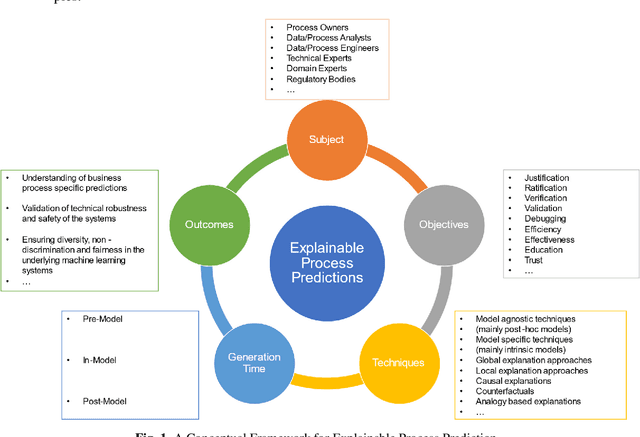

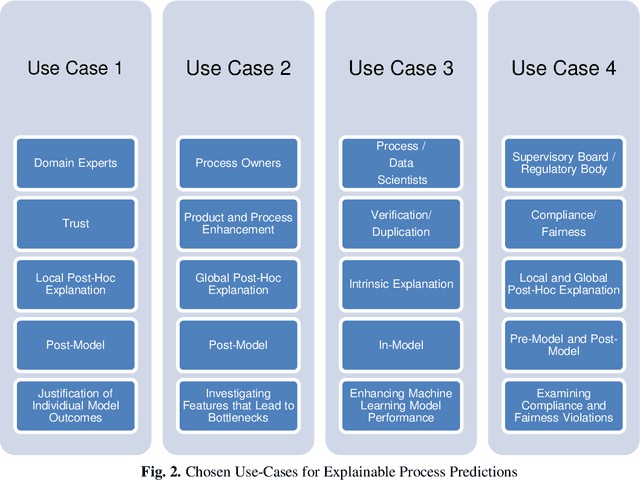

Abstract:The contemporary process-aware information systems possess the capabilities to record the activities generated during the process execution. To leverage these process specific fine-granular data, process mining has recently emerged as a promising research discipline. As an important branch of process mining, predictive business process management, pursues the objective to generate forward-looking, predictive insights to shape business processes. In this study, we propose a conceptual framework sought to establish and promote understanding of decision-making environment, underlying business processes and nature of the user characteristics for developing explainable business process prediction solutions. Consequently, with regard to the theoretical and practical implications of the framework, this study proposes a novel local post-hoc explanation approach for a deep learning classifier that is expected to facilitate the domain experts in justifying the model decisions. In contrary to alternative popular perturbation-based local explanation approaches, this study defines the local regions from the validation dataset by using the intermediate latent space representations learned by the deep neural networks. To validate the applicability of the proposed explanation method, the real-life process log data delivered by the Volvo IT Belgium's incident management system are used.The adopted deep learning classifier achieves a good performance with the Area Under the ROC Curve of 0.94. The generated local explanations are also visualized and presented with relevant evaluation measures that are expected to increase the users' trust in the black-box-model.
 Add to Chrome
Add to Chrome Add to Firefox
Add to Firefox Add to Edge
Add to Edge